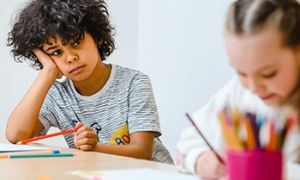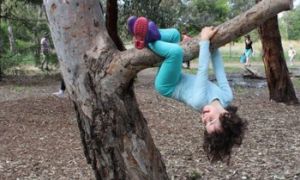Here are several ideas for an outdoor experience that weaves together sustainability and Aboriginal perspectives/culture in a way that feels authentic, respectful, and engaging for young children.
Dreamtime Discovery Walk
Concept: Organize a guided nature walk where the journey through the natural landscape is interspersed with storytelling sessions based on Dreamtime narratives. A local Aboriginal educator or cultural liaison can share stories explaining the spiritual connection Aboriginal people have with the land—a connection that naturally informs sustainable practices.
How It Works:
-
Storytelling Stops: At designated spots (like near a creek or under a significant tree), pause to tell a Dreamtime story that relates to the local environment.
-
Sensory Engagement: Encourage children to listen to the sounds, feel the textures, and observe the details of nature as they connect with the narrative.
-
Reflection: End the walk with a circle discussion where children can share what they noticed and learned about protecting nature.
This immersive approach connects indigenous cultural values with everyday observations of nature, teaching children both environmental stewardship and respect for cultural traditions.
Bush Garden and Indigenous Art Workshop
Concept: Create a “dreaming garden” where children gather natural elements—such as leaves, twigs, and stones—and use them to build a collaborative art installation inspired by Aboriginal art forms and storytelling.
How It Works:
-
Material Scavenger Hunt: Have children explore a safe outdoor area to collect natural items that have fallen naturally, ensuring the activity supports sustainability by using what nature offers without harm.
-
Art Creation: Once materials are gathered, guide the children in creating patterns or murals influenced by Aboriginal dot painting or bark art techniques.
-
Cultural Sharing: Invite an Aboriginal community member to talk about the symbols and meanings behind traditional art, reinforcing both sustainable living and cultural heritage.
This activity encourages hands-on learning and creative expression while respecting the deep connection indigenous cultures have with the land.
Land and Water Stewardship Workshop
Concept: Design an activity session that teaches children about caring for the land and water—essentials of sustainability—with lessons drawn from traditional Aboriginal practices.
How It Works:
-
Interactive Demonstrations: Create mini-stations where children can learn about water conservation (like understanding how water supports all life) or about controlled fire practices (in abstract, child-friendly ways) used to renew the land.
-
Cultural Integration: Explain how Aboriginal knowledge historically involves carefully managing natural resources, highlighting practices that modern sustainability efforts echo today.
-
Practical Tasks: In a guided activity, perhaps have children help set up a small, self-watering garden tray using recycled materials. This can be tied back to indigenous methods of working with natural cycles.
By linking practical sustainability skills to indigenous wisdom, you help nurture a mindful sense of responsibility for the environment in children.
Community Collaboration and Cultural Exchange
Concept: Ensure that cultural perspectives are authentically represented by involving local Aboriginal elders, artists, or cultural custodians in the planning and execution of the outdoor experience.
How It Works:
-
Co-Design Sessions: Schedule a meeting with local cultural leaders to learn about the significance of certain natural features in the area and how best to integrate those into your program.
-
Cultural Workshops: During the outdoor session, allow an elder or cultural educator to participate in a Q&A, share traditional ecological knowledge, or demonstrate small cultural practices (like storytelling, song cycles, or crafting).
-
Sustainability Focus: Emphasize the Aboriginal philosophy of living in balance with nature—what they have traditionally practiced long before modern sustainability became an issue.
Bush Tucker Foraging and Indigenous Cooking Session
Concept: Take children on an outdoor foraging expedition that highlights native bush foods, emphasizing how Aboriginal peoples have sustainably gathered and enjoyed these natural resources for generations.
How It Works:
-
Guided Exploration: A local Aboriginal cultural educator leads the children on a walk, pointing out edible native plants such as wattleseed, bush tomatoes, or lemon myrtle.
-
Tasting and Cooking: Once safely collected (with cultural permissions and environmental guidelines in place), use these ingredients to prepare a simple snack or appetizer.
-
Cultural Insight: The educator explains the sustainable harvesting methods used traditionally, linking these practices to modern ideas of environmental stewardship.
This activity connects children directly with the land, teaches the importance of sustainable food practices, and provides a hands-on link to indigenous cultural heritage.
Cultural Garden Creation & Native Planting Workshop
Concept: Transform a section of your outdoor space into a garden filled with native, culturally significant plants that reflect Aboriginal land and botanical knowledge.
How It Works:
-
Collaborative Design: Engage local Aboriginal community members to help choose plants with deep cultural meaning and ecological value.
-
Planting Activity: Children actively plant these species, learning about their roles in local ecosystems and Aboriginal traditions for land care.
-
Ongoing Stewardship: Maintain a garden journal where kids record observations about growth, water usage, and seasonal changes—a living lesson in sustainable practices.
This project not only emphasizes sustainable gardening but also underscores the traditional Indigenous wisdom in nurturing the land.
Traditional Tools & Craft Workshops Using Natural Materials
Concept: Create a workshop where children learn about making simple traditional tools or crafts from natural, collected materials.
How It Works:
-
Material Collection: Under careful guidance, children collect natural materials like reeds, twigs, or clays—in ways that ensure no harm to the environment.
-
Craft Activity: With the help of an Aboriginal craftsperson or cultural educator, children learn to fashion baskets, small ceremonial items, or clay impressions that echo traditional practices.
-
Cultural Storytelling: Intertwine the craft session with stories explaining how these tools were part of daily life and sustainable resource use within Aboriginal communities.
This hands-on craft session teaches respect for resourcefulness and highlights the sustainable practices embedded in traditional Aboriginal culture.
Interactive Story Mapping and Nature Journaling
Concept: Encourage children to build a communal "story map" of their outdoor learning space, incorporating Aboriginal Dreamtime narratives alongside their own observations.
How It Works:
-
Story Mapping: On a large, weather-resistant board, children and a local cultural storyteller work together to mark significant natural features. Each spot might trigger a Dreamtime story or an explanation of local Indigenous significance.
-
Nature Journaling: Complement the map with personal nature journals where children draw, write, or collage their observations of local plants, animals, and sensory experiences.
-
Reflective Discussion: Conclude with a group session where children share their interpretations, linking personal insights with traditional narratives.
This activity reinforces the interconnection between storytelling, environmental observation, and sustainable practices—a dynamic way to blend modern inquiry with ancient wisdom.
Aboriginal-Inspired Outdoor Performance & Movement
Concept: Facilitate an outdoor performance or movement session that incorporates elements of Aboriginal dance, music, and ceremonial practices in a respectful, educational manner.
How It Works:
-
Cultural Workshop: Start with a session led by an Aboriginal educator explaining the significance of traditional movements and natural rhythms (potentially incorporating didgeridoo sounds or clapping sticks).
-
Movement Activity: Guide children through simple routines and movements inspired by natural elements, such as the flow of water, the sway of trees, or the rhythm of footsteps on the land.
-
Reflection: Finish with a circle time discussion on how these movements express respect for nature, encouraging children to relate their own experiences of the outdoors to the performance.
This performance-based activity creates a multi-sensory learning experience that marries cultural expression with environmental appreciation.
Eco-Story Circle and Reflection
Concept: After any of the above activities, set up an "Eco-Story Circle" where children can express what they learned and felt about nature in their own words, connecting their experiences back to both sustainability and the rich narratives of Aboriginal culture.
How It Works:
-
Circle Time: Gather in a quiet spot outdoors (perhaps near a gentle water source or under the shade of a large tree) to give every child a chance to share.
-
Guided Reflection: Ask open-ended questions like, “What does caring for nature mean to you?” or “How do you think people can work with nature rather than against it?”
-
Art or Journaling: For older children, invite them to draw or write about their experience, fostering an emotional and intellectual connection to both the land and its cultural stories.
This reflective practice reinforces the day’s lessons and ensures that the children leave with a personal understanding of the concepts of sustainability and cultural respect.
These ideas offer a multi-layered approach to outdoor learning. They blend sensory experiences, hands-on creative work, practical sustainability lessons, and authentic cultural sharing into an experience that can both educate and inspire.


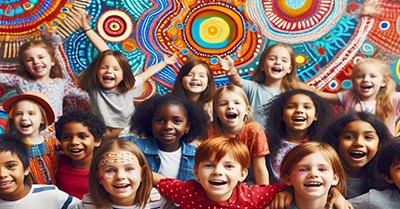

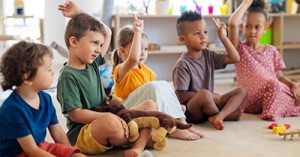


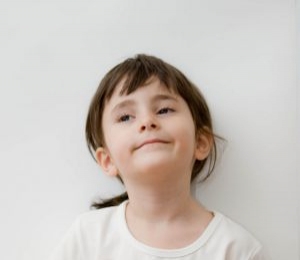 Open ended questions cannot be responded to with one word answers such as yes or no. These types of questions enables a child to provide
Open ended questions cannot be responded to with one word answers such as yes or no. These types of questions enables a child to provide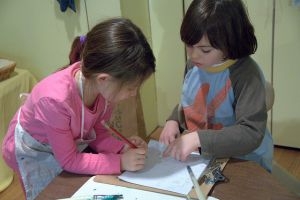 During your child’s preschool years, an important milestone begins to emerge. This is the development of pre-writing skills. Pre-writing skills are used to encourage, develop
During your child’s preschool years, an important milestone begins to emerge. This is the development of pre-writing skills. Pre-writing skills are used to encourage, develop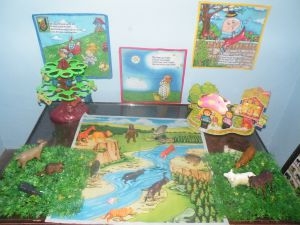 Open ended materials enables children to play freely. They are objects that have no rules to follow, use or function. Raw materials that can be
Open ended materials enables children to play freely. They are objects that have no rules to follow, use or function. Raw materials that can be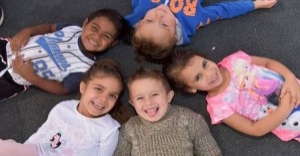 An Acknowledgment of the Country is a way of showing respect for the Traditional Owners and can be given by both non-Indigenous people and Aboriginal
An Acknowledgment of the Country is a way of showing respect for the Traditional Owners and can be given by both non-Indigenous people and Aboriginal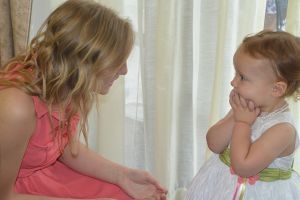 Language plays an important role in a child’s development. It enables a child to communicate effectively with their family, learn at school, socialize with friends,
Language plays an important role in a child’s development. It enables a child to communicate effectively with their family, learn at school, socialize with friends,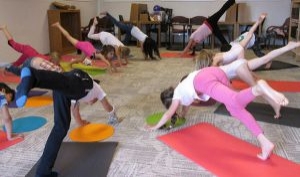 Like adults, children have to deal with their own stress in life. Moving house, starting a new school, preparing for a new sibling - these are
Like adults, children have to deal with their own stress in life. Moving house, starting a new school, preparing for a new sibling - these are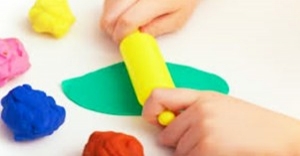 Playdough is such a versatile material. It provides numerous benefits to children as they manipulate it, it is safe and soothing and provides children with
Playdough is such a versatile material. It provides numerous benefits to children as they manipulate it, it is safe and soothing and provides children with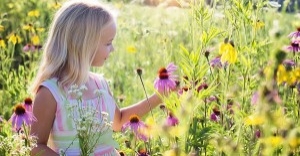 Teaching children about sustainability enables them to appreciate and respect the natural environment. Early childhood services can provide meaningful hand on learning experiences in order
Teaching children about sustainability enables them to appreciate and respect the natural environment. Early childhood services can provide meaningful hand on learning experiences in order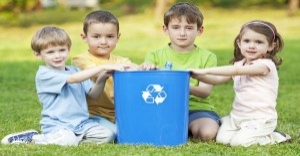 Recycling is an important concept that teaches children to care for the environment. It encourages children to be responsible and show a growing appreciating for
Recycling is an important concept that teaches children to care for the environment. It encourages children to be responsible and show a growing appreciating for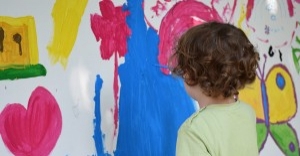 When children apply paint to paper, glue things together, or pound a lump of clay, they experiment with colour, shape design and texture.
When children apply paint to paper, glue things together, or pound a lump of clay, they experiment with colour, shape design and texture.
